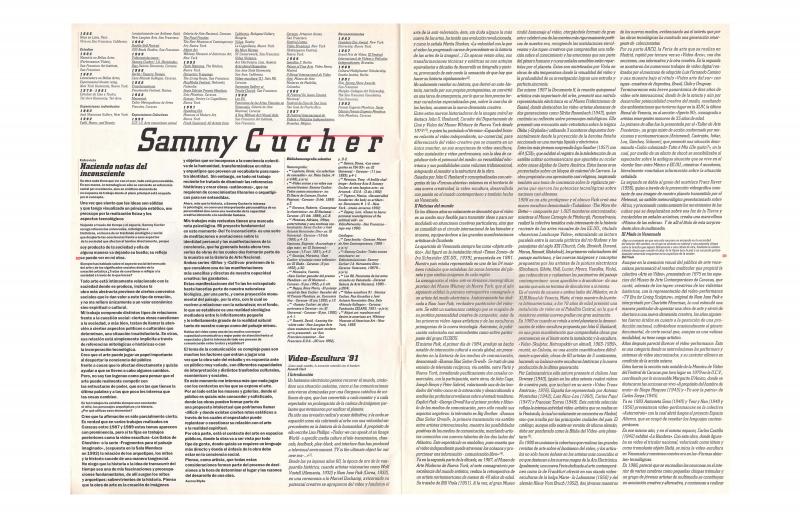The exhibition CCS-10. Contemporary Venezuelan Art is one of the most important events in conceptualism, manifestations of mixed media, and the incorporation of technology that has taken place in Caracas. Curator and graphic designer Álvaro Sotillo brought together ten emerging artists of the 1970s and 1980s, who by 1993 (the date of the show) had established themselves: Eugenio Espinoza (n. 1950), Sigfredo Chacón (n. 1950) Héctor Fuenmayor (n. 1949), Roberto Obregón (n. 1946), and a few other who emerged in later decades: Alfred Wenemoser (n. 1954) (Sammy Cucher (n.1958), Meyer Vaisman (n. 1960), Oscar Machado (n. 1953), José Gabriel Fernández (n. 1957) and José Antonio Hernández Diez (n. 1964). Obregón was one of the first representatives of Venezuelan conceptualism, delving as a young man into new figuration. He died in 2003, at the height of his career without leaving any written or published works, unlike other artists of his generation (Espinoza or Miguel von Dangel, for example). Nevertheless, the strong critical content of his thinking and the lucid (at times brutal) way in which he informally offered his opinions and theories on art and the socio-cultural milieu, have earned him a place as a creator of ideas (although these have been picked up and assessed in writing sporadically), accessible to curators, critics, writers, and journalists. This interview offers a useful summary, by centering on fundamental aspects of his thought process. It presents a calmly reflective Obregón who explains his concepts on “the nature of art” simply and deeply. He affirms that “art is just another activity, connected to life, to the everyday; art contains dark psychological aspects that cannot be written.” He speaks simply and naturally of death: the great theme of his work; he sees “the rose” as a symbol of transit between life and death. In his words, it is a funerary offering “to death, that sacred passage, origin of all religions.” Because of his solitary life and the significance of his work, his theory and his complex and influential personality, Obregón became a model to his contemporaries. The year after his death, a group of his intimates created the Asociación Civil RROR (Roberto Raúl Obregón Roca, whose mission was to study and disseminate knowledge of the life, work, and theory of this unique Venezuelan artist. For more of Blyde’s interviews with artists participating in the show CCS-10. Arte venezolano actual, see the ICAA digital archive: “Jugando a atrapar el espacio. [con Sigfredo Chacón]” (doc. no. 864412); “Por la seducción de ver [con José Gabriel Fernández]” (doc. no. 864393); “De las cenizas petrificadas por el tiempo: [con Oscar Machado]” (doc. no. 864755); “Irreflexiones, reflexiones y flexiones” [con Héctor Fuenmayor] (doc. no. 864715); “Sammy Cucher: entrevista: haciendo notas del inconsciente” [con Sammy Cucher] (doc. no. 864676); “Ficción sobre ficción: [con Meyer Vaisman]” (doc. no. 1051228); “Entre el orden histórico y el caos emocional. [con Eugenio Espinoza]” (doc. no. 864696); and “En la búsqueda, pero sin querer buscar. [con José Antonio Hernández Diez]” (doc. no. 864736)].








